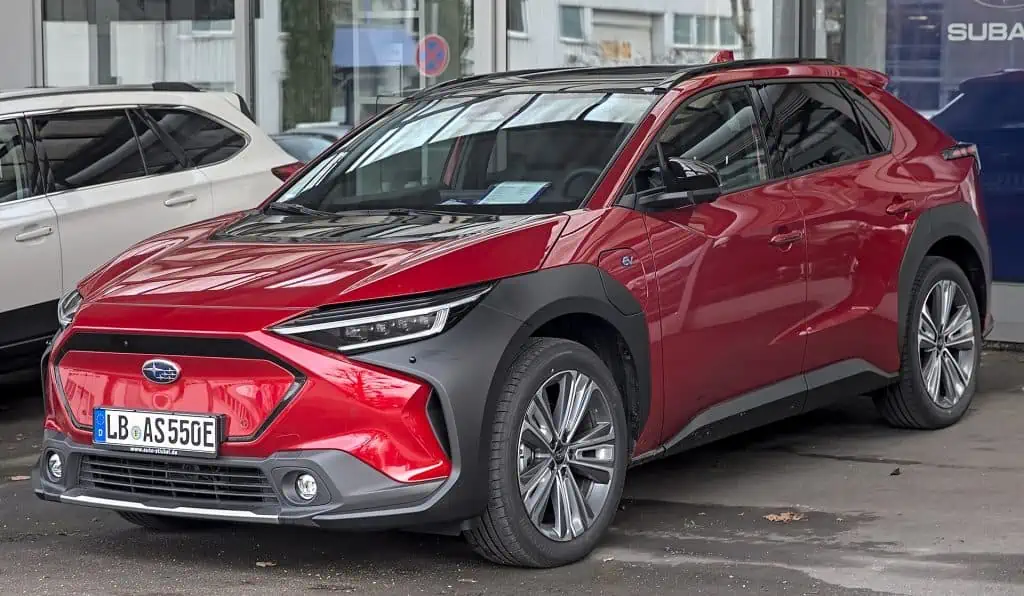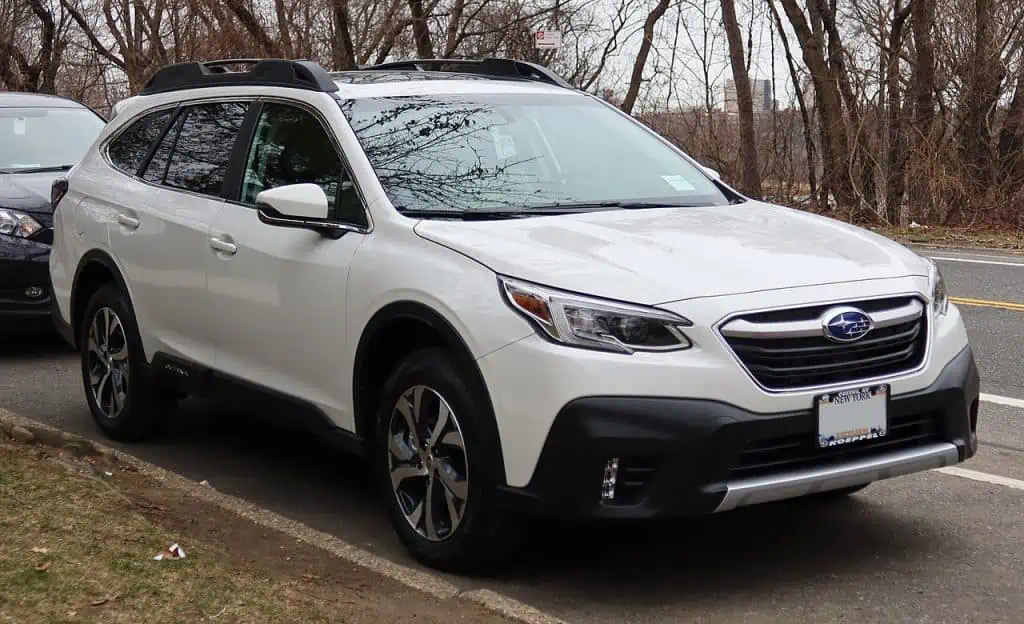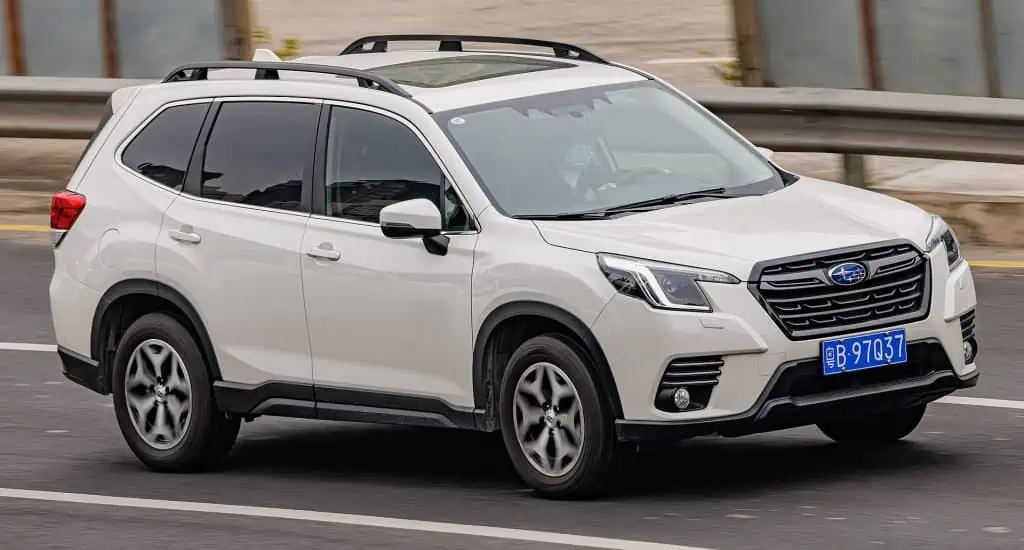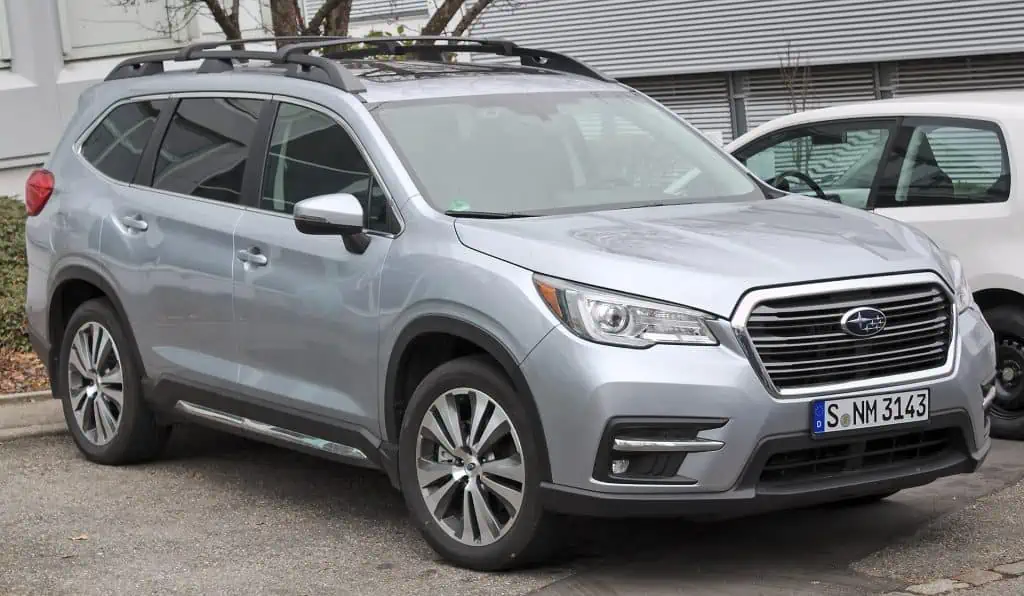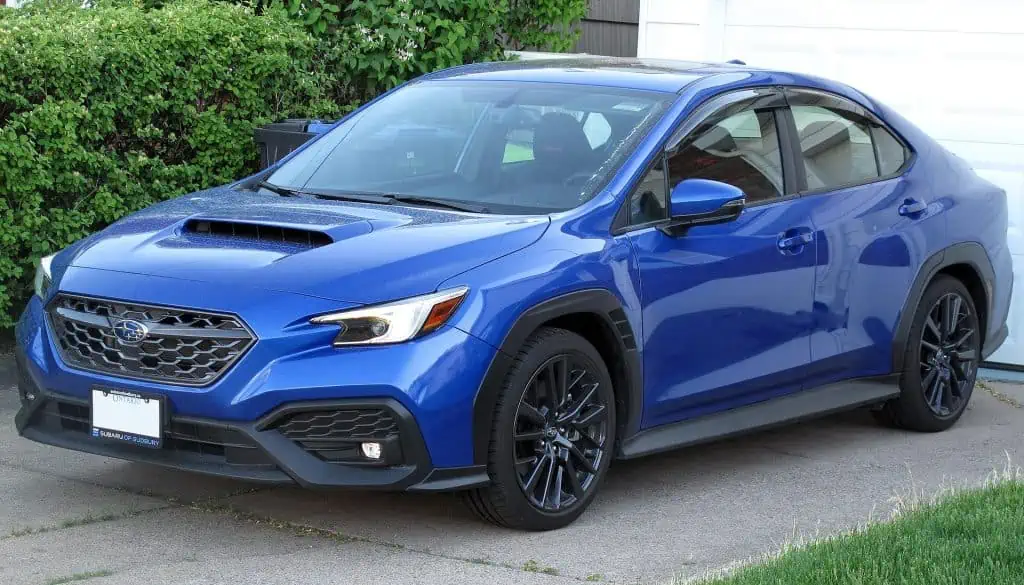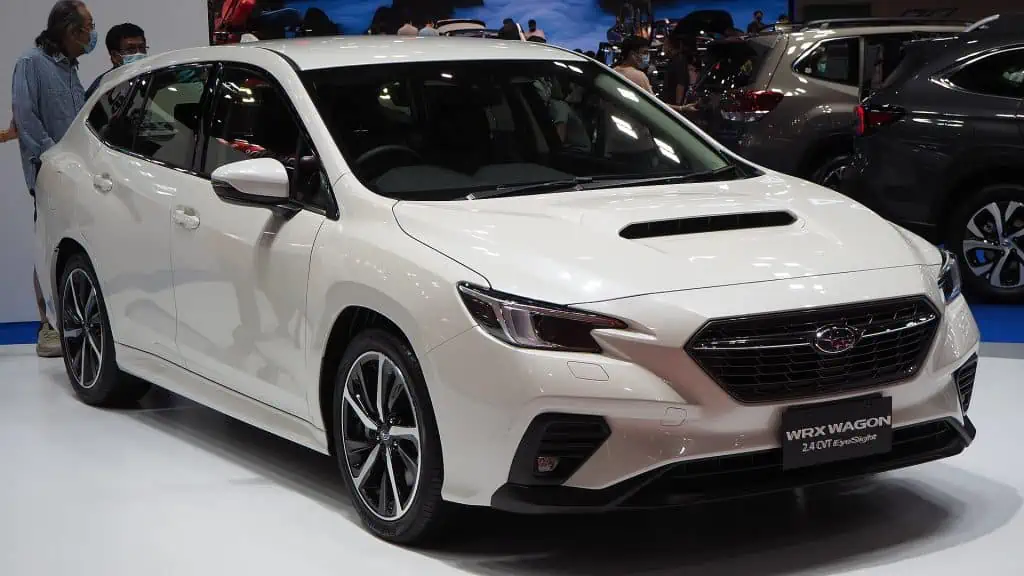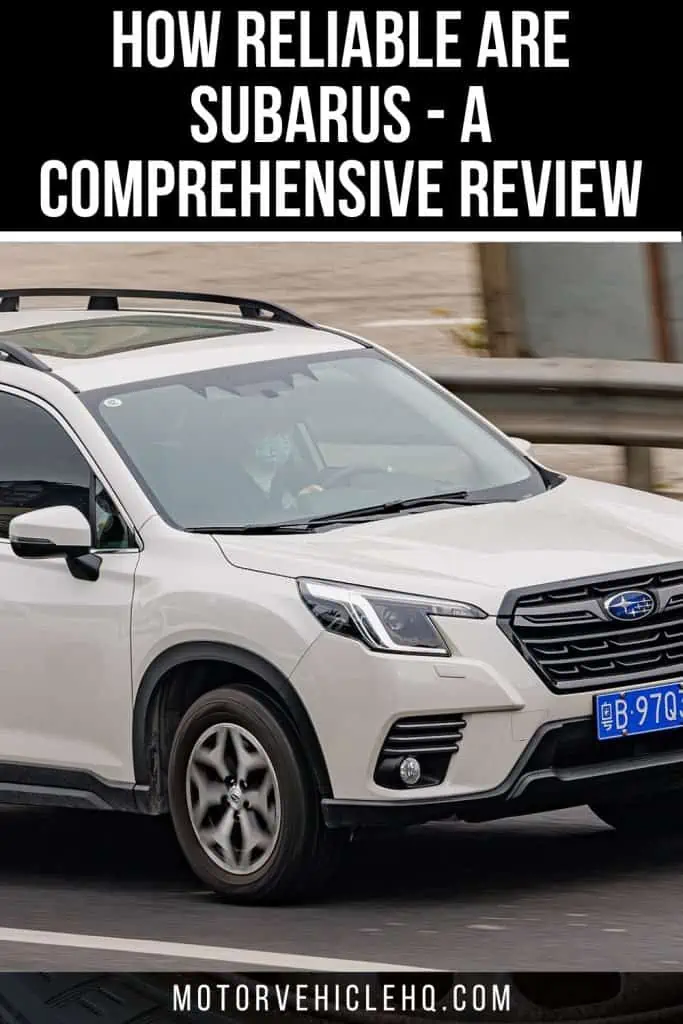Japanese automaker Subaru was once known as Fuji Heavy Industries. Because of its off-roading capabilities, it has developed a devoted following over the years. They also had distinctive Boxer engines. Also, along with its well-known reputation for Subaru’s dependability, and high-performance potential.
Subaru has a reputation for being incredibly dependable and having excellent build quality. They have, however, made several poor engineering choices since the early 2000s, which may have contributed to their reputation being tarnished.
Subaru gained a reputation as a manufacturer of overly reliable cars in the 1990s. With Colin McCrae at the wheel, their successes in the World Rally Championship only served to increase their notoriety with the general public.
Subaru’s US sales figures rose by 21.03% in 1996, the highest jump in the business’s history since 1979, when they had been steadily declining.
When it comes to producing high-quality automobiles, Subaru has historically had remarkable success. Even the best automakers occasionally make mistakes, and some of their models or products were rushed to market.
Rushing through production frequently results in poor build quality and manufacturing flaws. Some of these issues could be extremely serious and harm a business’ long-established reputation.
A few Subaru engines don’t meet the requirements. When acquiring any Subaru vehicle, there is something to be aware of with these motors. Before anything else, you should be aware of what you’re entering into. You don’t want to lose a lot of money on an automobile that later turns out to be a total loss.
You don’t want to purchase a lemon for yourself. The worst cars you can buy are lemons, but those stylish, more recent vehicles are even worse. They conceal a lot of problems that people before you haven’t been able to resolve. If you naturally seek out solutions to issues, this can be the ideal purchase for you.
The Subaru Solterra by Alexander Migl / CC BY-SA 4.0. Subaru is known for its exceptional build quality and high level of dependability. But, during the early 2000s, they made several bad engineering decisions that might be to blame for the damage to their reputation. In the 1990s, Subaru developed a reputation as an excessively dependable automaker. Their triumphs in the World Rally Championship with Colin McCrae at the wheel only served to raise their notoriety with the general public.
We’re going to talk a lot about Subarus in this essay. We’ll talk about the boxer motor. Afterward, we’ll talk about Subaru engine issues and which engines you should steer clear of. Thus, if you’re curious to know “how reliable are Subarus” read on. Observe along.
An Overview of Subaru Cars
The 22nd-largest automaker in the world is Subaru. While being founded in 1953, the business evolved from Fuji Heavy Industries, a 1915-era aviation development facility.
Since the production of fighter planes was no longer required after World War II, the company changed its focus and began making scooters, most notably the Fuji Rabbit. This was created from leftover components from the planes that were built during the war.
The company was divided into 12 smaller corporations in 1950, and Subaru was created as a result. You may be wondering if Subarus are reliable after all this time.
The Subaru 1500 was the first automobile that Subaru ever produced. They couldn’t produce anymore because there were only 20 of them available off the production line.
After that initial run, they produced several other models before introducing the boxer engine, for which they are now arguably best known.
How Reliable are Subarus?
JD Power and Associates’ dependability assessments for the 2020 model year for the newest Subaru vehicles, particularly those like the Subaru Outback, Subaru Forester, and Subaru Crosstrek, have not been very beneficial for the Japanese carmaker.
Subaru has consistently ranked below the industry average for dependability, according to JD Power, for the past 5 years. Additionally, this is not limited to JD Power. Subaru is the seventh-best automaker overall according to Consumer Reports.
When JD Power conducts a study on dependability, they count the difficulties that original owners of 100 automobiles encounter for a year. The way this works is that they’ll be assessing vehicles from the year 2017 to 2020.
The study was conducted in 2020, however, the models that were examined were not those made in 2020 because that is how you can extract a complete year’s worth of data from a car.
100 vehicles have 156 faults on average, according to the industry. 2016 saw Subaru receive 166, and 2017 saw 164. Subaru scored 167 issues per 100 vehicles in the 2018 report, placing them in the worst 25% of all vehicle manufacturers. This year’s industry average has increased to 142.
Subaru increased its ranking to 154 in the year 2020, however, it is still 10 off the bottom of the list. Currently, the sector average is 134. It’s important to note that Subaru has improved the Outback, the Crosstrek, and the Forester since the vehicles from 2017, but data on those won’t be accessible for another year or two.
A 2021 Subaru Outback Limited by Kevauto / CC BY-SA 4.0. Sales for Subaru in the US increased by 21.03% in 1996, the biggest increase since 1979, when they had been slowly dropping. Subaru has always had great success when it comes to making high-quality autos. Even the most skilled automakers occasionally make errors, and some of their models or goods were pushed into the market too quickly. When production is rushed, poor construction quality and manufacturing defects typically ensue.
Subaru Reliability Ratings By JD Power
One thing to keep in mind when reviewing the statistics that present a somewhat bleak picture of the Subaru is that drivers have not given any weight to Subaru-related issues.
This means that if a car only has windshield wipers that don’t completely clean the windshield and another car has a poor transmission, both of those issues are weighted equally. Two points are deducted from the car as a result.
A problem with the wipers’ connection is less serious than a gearbox issue. As a result, it’s unclear why the Subaru is rated so poorly; all that is known is that difficulties have been recorded, albeit it’s unclear how serious they were.
It’s also important to keep in mind that JD Power is just one source of automotive reviews. Many publications, including Car and Driver, Consumer Reports, Motor Trends, and dozens more, also review Subaru cars, and frequently the reviews don’t agree.
For instance, Consumer Reports has a far more positive opinion of the Subaru Crosstrek than JD Power, which raised concerns about the dependability of some Crosstrek models. And if you’re interested in purchasing a new vehicle, you ultimately need to acquire a bigger picture to make an informed selection.
Do your homework whenever you are considering purchasing a new vehicle. Before making a purchase decision or before dismissing any particular model out of hand, consider the viewpoints offered by as many sources as you can discover, especially those that are supported by concrete evidence.
Which are Subaru’s Most Reliable Models: How Reliable are They?
Purchasing a Subaru has several undeniable advantages. Due to its high efficiency, the boxer engine will probably cost you less money and require fewer repairs over its lifespan than other engines.
Also, depending on the model you choose, Subarus are often fairly reasonable. It may be tempting to choose one because of this.
Notwithstanding JD Power’s low-ball rating of the Subaru, let’s look at which Subaru models have a history of being the most dependable as we know that the rankings aren’t always weighted in a way that accurately depicts Subaru’s strengths and limitations.
1. The Legacy – Subaru
The Legacy, one of Subaru’s most well-known models, debuted in 1990. The Legacy model from 2015 won the Canadian Vehicle of the Year award for excellence, and since then, the vehicles have demonstrated remarkable performance.
Consumer Reports awarded the 2020 Subaru Legacy a reliability rating of 4 out of 5, which is typical for most publications that took the time to review this specific model. Even the busiest drivers can depend on Subarus.
The Subaru Forester by Dinkun Chen / CC BY-SA 4.0. Certain Subaru engines fall short of the standards. There is something to be aware of when purchasing any Subaru vehicle with one of these motors. You need to know what you’re getting into before you do anything else. You don’t want to spend a ton of money on a car that ends up being a total loss. You don’t want to buy yourself a lemon.
Special praise has been given to the 2020 Legacy’s outstanding engine and transmission performance. It also received good scores for safety, in large part as a result of the fact that, in comparison to other vehicles in its class, it offers a broad range of standard safety equipment.
The Legacy’s dependability is greatly enhanced by features like forward collision and blind-spot warnings as well as lane departure assistance. Also, it performed remarkably well in the crash and rollover tests, earning a 5-star overall crash test rating.
2. The WRX – Subaru
The Subaru WRX is worth looking at because it’s a very popular Subaru model and possibly the most sporty and svelte-looking Subaru vehicle ever made. A turbocharged 2.0-liter four-cylinder engine in the Subaru WRX can produce up to 268 horsepower.
It has an all-wheel drive system as standard equipment and is available with either a manual or CVT transmission. A 2.5-liter 4-cylinder engine with 310 horsepower is also an option if you want a little bit more power.
Despite this, the WRX only received a dismal 2 out of 5 ratings for reliability according to Consumer Reports. Although it accelerates incredibly quickly and handles better than most other cars on the road, the ride is by no means smooth.
The WRX still might be a good option for you if performance is your top priority. Some drivers would undoubtedly be willing to give up a little bit of comfort on the road when going from 0 to 60 in 6 seconds.
3. The Impreza – Subaru
Regrettably, most publications that have assessed the Subaru Impreza give it a poor reliability rating. The Impreza received a reliability rating of only two out of five, the same as the WRX. It is a sporty vehicle with all-wheel drive and good fuel efficiency.
The acceleration, however, could be better. The Impreza’s 170-foot stopping distance from 70 mph is also not all that spectacular. For the majority of the amenities it offers, the Impreza is generally considered to be rather average by reviewers.
The right doesn’t do anything particularly noteworthy or amazing, but it also doesn’t do much to make you despise it either. It is a typical automobile.
4. The Outback – Subaru
The majority of reviews have indicated that the current models of the Subaru Outback are above average in terms of reliability, notwithstanding JD Power and Associates’ fairly unfavorable opinion of it in the past.
Based on previous reviews as well as the features of the most recent versions, Consumer Reports has rated the 2020 Subaru Outback as four out of five in terms of reliability. JD Power rates the new Outbacks a 3.5 out of 5 ratings.
The Outback has not experienced any significant setbacks in terms of things like engine problems, transmission issues, fuel systems, electric systems, brakes, and so on over the past few years of manufacture.
In terms of all these systems and how well they work, it is a little ahead of the competition. Subarus are dependable vehicles. The Subaru Outback should be on your list of potential automobiles to look at if you’re searching for a reliable SUV.
The Subaru Ascent by Alexander Migl / CC BY-SA 4.0. The reliability ratings for the newest Subaru models for the 2020 model year, notably those like the Subaru Outback, Subaru Forester, and Subaru Crosstrek, have not been very favorable for the Japanese automaker. During the past five years, Subaru has continuously performed below the industry average in terms of dependability, according to JD Power. Consumer Reports ranks Subaru as the seventh-best automaker overall.
5. The Forester – Subaru
The 2020 Subaru Forester has a reliability rating of 3 out of 5 from Consumer Reports. The car was able to earn an overall rating of 84 out of 100. Unfortunately, the Forester has a track record of reliability problems, which is why it scored worse than average for the 2020 model year.
The Forester has not demonstrated extraordinary dependability from 2017 through 2019, and the 2020 model years’ scores are partially based on this performance.
The Forester was also Consumer Reports’ second-ranked SUV overall, which is worth considering given that reliability is primarily based on expected reliability rather than actual reliability. Is Subarus trustworthy? The Forester is proof that the answer is in fact yes!
6. The Crosstrek – Subaru
However, if you’re in the market for a new car, the Subaru Crosstrek’s expected reliability ratings are well below what you might hope. The Subaru Crosstrek receives an overall score of 7.3 from US News & World Report.
That is based on 26 additional reviews that they have accumulated and collated. On a scale of 1 to 5, reliability is only 2.5. It’s been a while since I’ve had a chance to do this, but I’m going to try it anyhow. Also, the 2020 model year achieved an overall score of 87 out of 100 during their road test.
The Subaru Boxer Engine Reliability
Subaru is widely recognized for using boxer engines in its vehicles. Compared to inline or V8 engines, boxer engines operate differently. They use the same pistons, crankshaft, and spark concept as conventional internal combustion engines, though, thus they do adhere to the same principles.
Comparing boxer engines to other piston designs, they have different layouts. The boxer engine’s operation allows it to rest flat with the pistons at a 180-degree angle. They are substantially wider than V8 engines and have a largely flat form.
The motor’s pistons are flattened on both sides, and the crankshaft is positioned in the center.
When they are at work, they appear to be sparring with each other in the sport of boxing. That is where the engine’s nickname, “boxer,” came from. Because so few automakers use this engine configuration, Subaru vehicles are distinctive and exceptional.
Pros of the Subaru Boxer Engine
Boxer engines have a lot of benefits. It is the short length and low center of gravity of a couple of them. When it comes to cooling, this is beneficial.
Another advantageous feature is the spacious front of the engine, which makes it easier to service and replace certain parts.
This is crucial since, occasionally, some engines require the removal of the entire engine from the vehicle for a straightforward repair. That is so that these things can be addressed, maintained, and replaced appropriately.
A 2022 Subaru WRX Sport Tech by Elise240SX / CC BY-SA 4.0. In 2020, Subaru moved up the rankings to 154, but it is still 10 places from the very bottom. The sector average as of right now is 134. The Outback, Crosstrek, and Forester from Subaru have all been improved since the models from 2017, although data on those won’t be available for another year or two.
Less vibration can reverberate during the combustion process because of the boxer engine’s design.
Less vibration means improved passenger comfort and a more enjoyable driving experience. This is important because, at the end of the day, what good is driving a car that is uncomfortable to travel in?
Cons of the Subaru Boxer Engine
The boxer design has a lot of advantages. Yet when we talk about flat engines or boxers as many like to call them, there are also a few drawbacks.
The width of its design is one of its drawbacks. Thus you need a wide engine bay to make room for a wider engine.
Moreover, the stroke is too short, increasing the likelihood of piston rod failure. These engines must have a short stroke to fit the flat boxer engine in the engine bay.
However, because these rods are much shorter than those found in standard inline-four engines, they may begin to exhibit problems and, in some circumstances, even shatter because of a weak foundation that cannot withstand the significant load. So, it makes sense to upgrade your rods if you want to increase the engine’s output of power.
The engine is tough to work on and has a larger footprint. Consequently, it will be incredibly challenging to access the engine from the side if you need to change your spark plugs. That occurs as a result of the engine being so near that the frame rails are practically touched.
The requirement to completely remove the engine to undertake various repairs can result in higher repair costs. Thus, some maintenance tasks are not suitable for DIY.
The requirement for two engine heads is another drawback of this engine. Because you need to produce two engine heads per engine rather than just one, it signifies that this engine will cost more to produce than a straight four or straight six.
Defective Head Gaskets
Subaru models have long been troubled by the problem of blown head gaskets, which was particularly common from 2003 to 2009.
According to Dashboard Light.com’s long-term quality index, the defect rate for the best-selling model at the time (the Subaru Outback) increased from 18% to 23%. This was primarily brought on by head gasket problems that occurred after the warranty had ended.
Since the mid-1990s, blown head gaskets have been a Subaru problem. Yet, since the early 2000s, this has only started to become well-known outside of enthusiast circles.
This problem typically manifests itself after 75,000 miles. Except for blown head gaskets, Subarus from this era are often rather dependable and offer good value; nonetheless, a blown head gasket is not a minor or inexpensive problem.
How Come the Head Gaskets are Problematic?
For a variety of reasons, Subaru head gaskets frequently break, which causes the majority of trouble for owners and potential buyers.
In rallying, where power comes first and lifespan second, experimental engine technology works wonders, but on the street, the exact opposite takes precedence. One of Subaru’s distinctive selling advantages, the Boxer engine, is also one of its drawbacks.
A 2022 Subaru WRX Wagon by Chanokchon / CC BY-SA 4.0. Subaru’s use of boxer engines in their automobiles is well known. Boxer engines behave differently from inline or V8 engines. Yet, they do follow the same principles as conventional internal combustion engines because they use the same pistons, crankshaft, and spark concept. Boxer engines have various layouts when compared to other piston designs.
The gaskets are constructed from thin metal sheets that have a coating that resembles graphite. This mixture is regarded as antiquated and prone to failure and is referred to as a “composite type” head gasket.
MLS (multi-layered steel), which is more popular and less prone to break, is a more dependable kind of head gasket.
The peculiar engine configuration of the Subaru merely served to accentuate the problem of a delicate head gasket type.
The boxer horizontally opposed four-cylinder engine, favored by many for its customizability and distinctive sound, features two-cylinder head gaskets as opposed to the inline four-cylinder engine’s single-cylinder head gasket.
A mechanic won’t be able to replace these in the afternoon because it’s a time-consuming and expensive job (unless you are dealing with a well-equipped Subaru specialist).
Subaru didn’t update its materials until 2011, after which the issue of blown head gaskets was resolved.
Subaru Reliability Summary
The simplest fix is to avoid purchasing any Subaru vehicle manufactured between 1995 and 2011 unless it has a complete service history that includes a head gasket repair.
If not, you might have to spend a lot of money to get this problem rectified, which, given Subaru’s track record, is unavoidable.
The engine will leak coolant if the head gasket is blown, which can be detected. As a result, the engine will be more likely to overheat after a brief drive.
The interior leaks that plagued earlier Subarus were harder to detect than the outward leaks that plagued later models.
Check for a coolant puddle on the ground underneath the car or an oil leak around the head and crankcase.
Recent Subaru: How Different are They from the Old Models In Terms of Reliability?
In terms of overall performance and value, Subaru was selected as the best automobile brand in 2019 by Consumer Reports.
But they also gave Subaru a repair and dependability grade of #7, which is five places down from their prior position in 2018. Despite being on the right road, Subaru is still having issues.
With only a tiny number of vehicles in production, Subaru’s recent recalls for serious flaws reflect considerably greater damage to their reputation than, say, a recall by Mercedes, which has three times as many models available.
Subaru announced a recall for the Outback in the early months of 2019. The brake pedal area may have deformed as a result of a loose bolt. As a result, there may be less effective braking and a higher chance of a collision.
A 2022 Subaru BRZ by Chanokchon / CC BY-SA 4.0. In my opinion, Subaru has incredible potential, but it falls short due to some reliability issues. If a Subaru is your dream car, search for older models with a solid service record or, if necessary, those with head gasket replacements before 2011. They provide superior performance and value in comparison to rivals. But, there is a cost associated with this possibly a substantial repair fee.
In the same period, Subaru also issued two recalls for 671,225 Subaru Impreza owing to two separate problems that resulted in an engine power reduction.
The first was brought on by the possibility that an oil flow control mechanism and a crankcase ventilation valve would separate, leaking valve parts into the engine. The second was brought on by engine control modules with incorrect programming.
Due to a seatbelt issue, Subaru was forced to recall the new XV Crossover in 2020. Such failures don’t assist in improving their reputation in the public eye.
The Myth Associated with Subaru Reliability
Subaru, in my opinion, has amazing potential but falls short due to some dependability difficulties. If you have your heart set on a Subaru, look for models with a long service history or with head gasket replacements before 2011 if you must.
Compared to competitors, they offer excellent performance and value for the money. Nevertheless, this does come with a cost—possibly a big repair fee.
Do your research before deciding to purchase a Subaru, and keep in mind that some more expensive competitors (such as a Toyota CHR instead of an XV) may end up being far less troublesome in the long run.
How has your encounter with Subaru been? Has your CVT gearbox given you any trouble?
The Conclusion
Not all Subaru models will be the most dependable automobiles on the road. You can say that about any car manufacturer, but you can say that certain Subarus are dependable while others aren’t.
While certain Ford, Toyota, Chevy, and other brand cars have proven to be incredibly reliable, others have not. You should conduct a study before spending your hard-earned money on a vehicle since, regrettably, that is occasionally how the auto industry operates.
It’s not always true that something will work properly or function the way you need it to just because it looks wonderful.
Despite this, Subaru has continued to distinguish itself as a dependable and affordable car over the years. The answer to the question “Are Subarus Reliable?” is yes for many models.
Just be sure to do your homework on the model you’re considering to see whether it’s going to be a good fit for you. Don’t just accept one viewpoint; ensure that you look into it from a variety of angles so that you are as educated as possible.
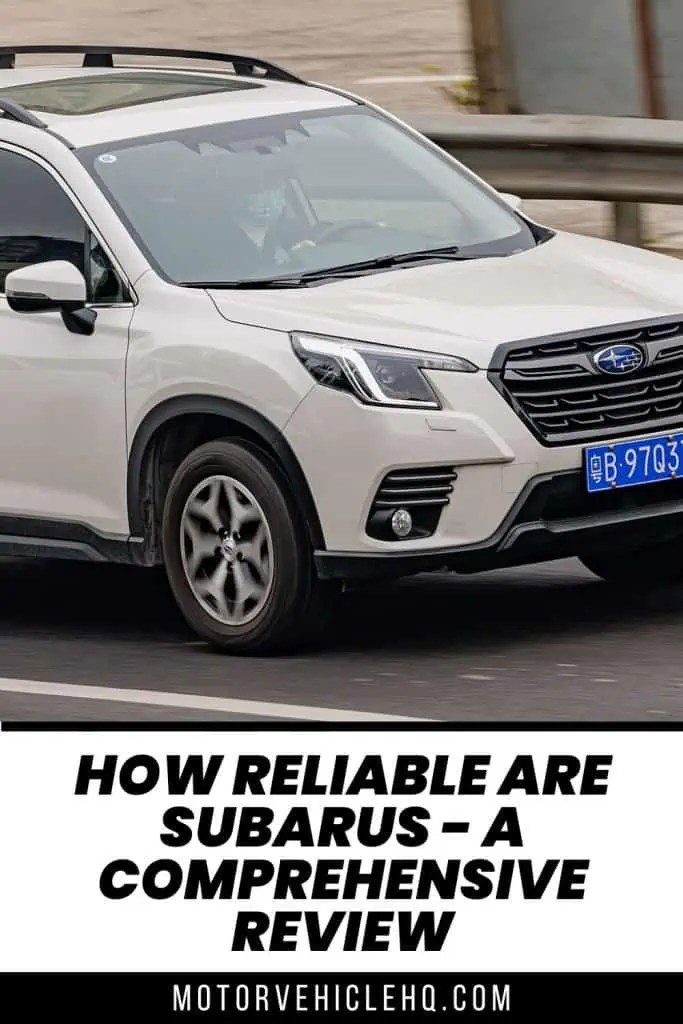
The Subaru Forester by Dinkun Chen / CC BY-SA 4.0

Jim Wicks is the founder of MotorVehicleHQ. With over two decades of experience in the automotive industry and a degree in Automotive Technology, Jim is a certified car expert who has worked in various roles ranging from a mechanic, car dealership manager, to a racing car driver. He has owned more than 20 cars over the past 15 years. Ask him about any vehicle you see on the road and he can tell you the make, model and year. He loves the aesthetics of all things cars, and keeps his vehicles in pristine condition.
In his free time, Jim enjoys getting his hands dirty under the hood of a classic car or taking long drives along the country roads. His favorite car? A 1967 Shelby GT500, a true classic that, according to Jim, “represents the pure essence of American muscle.”
